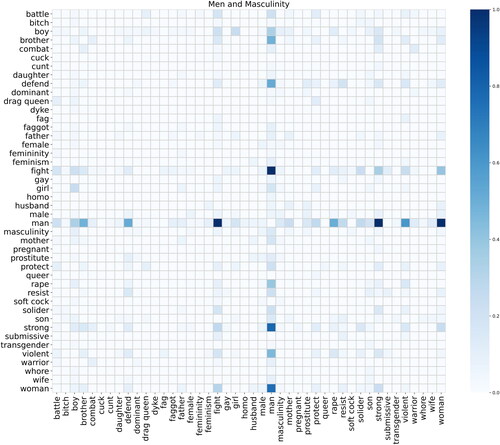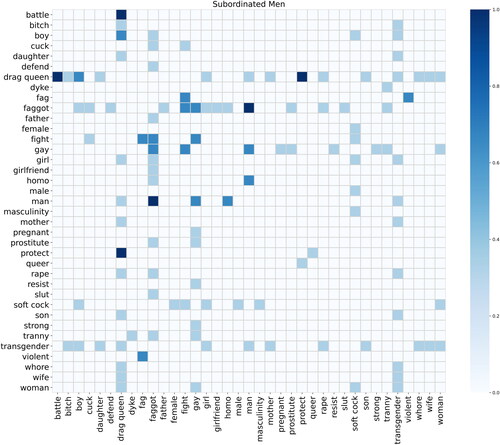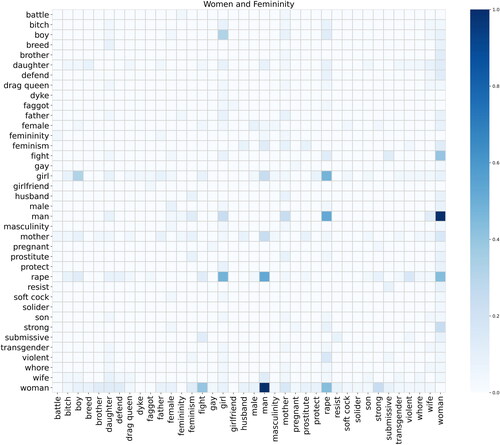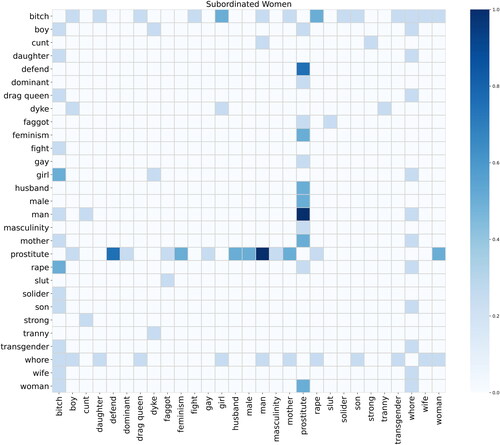Figures & data
Table 1. Deductive gender themes.
Figure 1. A network map visualising the co-occurrence of keywords associated with the different gender themes. The size of nodes (keywords) is determined by their frequency within the text corpus, and edge width is determined by the frequency of co-occurrence of two keywords.
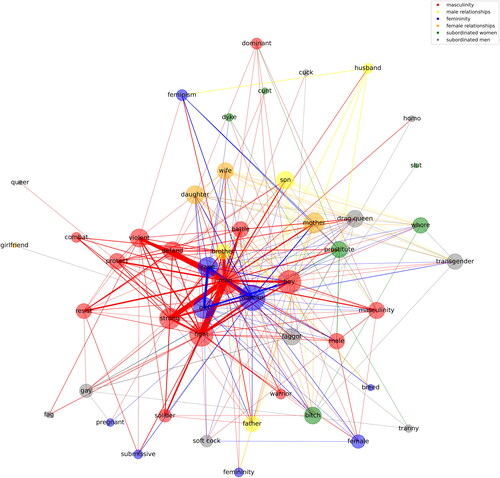
Figure 2. Heatmap visualising the co-occurrence of keywords related to men and masculinity. To see the level of co-occurrence between two keywords, first identify the two keywords of interest (one on the x axis, and one of the y axis) and follow the gridlines to see the point at which they intersect. Looking at the square where they intersect, use the colour gradient on the right-hand side of the figure to determine how commonly the keywords co-occurred relative to other keyword combinations – the darker the blue of the square, the more commonly those keywords co-occurred. Follow this procedure for all additional heatmaps presented throughout the findings and discussion section.
